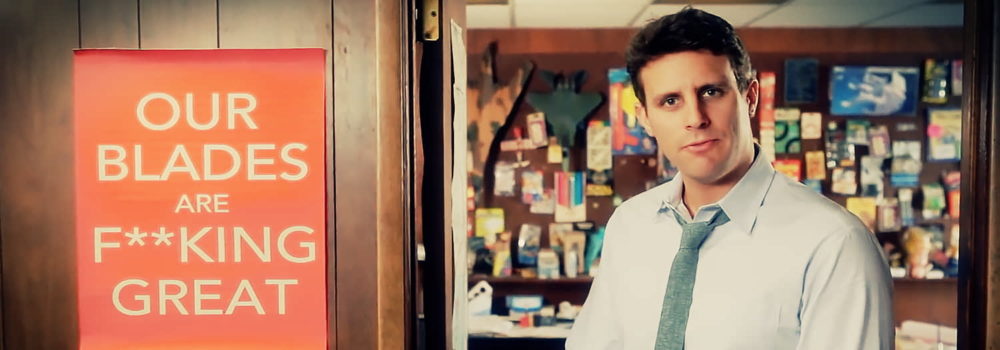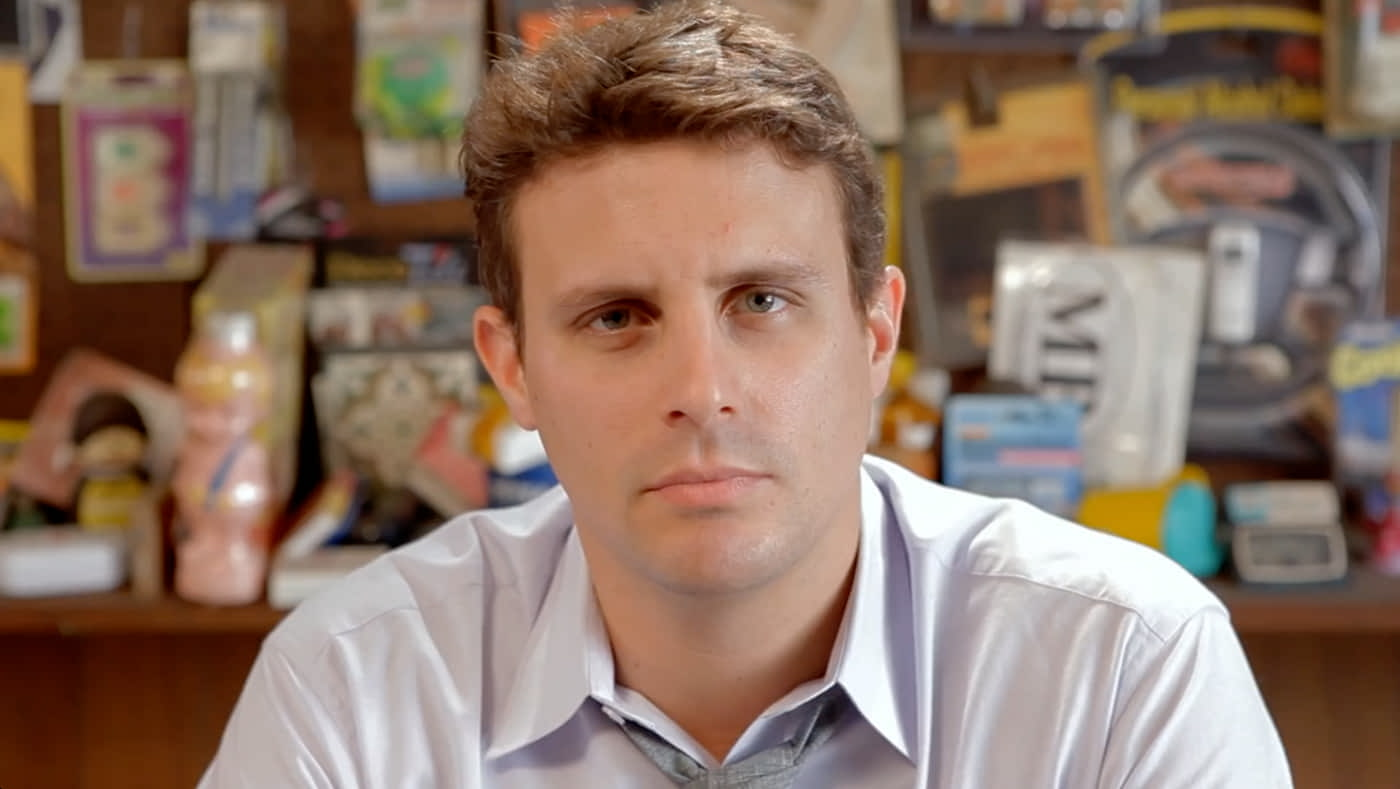You may have already seen this. It’s a few weeks old already.
Click on the image below
If you haven’t, then take a look at this (real) video ad for Dollar Shave Club, a subscription-based razor blade delivery service.
Not only does the ad feature the actual company CEO, Michael Dubin, as its central character. The video – which cost just $4,500 to make – was used to help secure venture capital financing from big-name companies such as Kleiner Perkins Caufield & Byers and Andreessen Horowitz!
The results so far have been staggering. In the first ten days of launch, Dollar Shave Club signed-up 20,000 subscribers. In less than a month, their off-the-wall, built-to-be-shared video has been seen 4 million times.
The company is on target to secure more than $50 million in sales in the first twelve months of trading. This is in what most people would agree is a mature industry, dominated by just 2 or 3 major players. They’ve done this in a commodity market space with zero marketing budget, sales staff, distributors, resellers, print or TV advertising.
Regardless of how well (or otherwise) Dollar Shave Club does in the coming months and years, what would seem clear from a marketing perspective is that the big guys have been caught napping. An unknown upstart has come along and not only disrupted the established business model (i.e. sell the razors cheaply, and charge a fortune for the blades). But they’ve communicated their business value in a way that cannot be ignored. Dubin used to be a digital marketing director at Sports Illustrated. Clearly his experience has been put to great use.
The “safe” option would have been for Dollar Shave Club to market their product along the same lines at how the other guys do it. The problem with doing that is that the audience wouldn’t have noticed them. Honestly, if you covered-up the logo and tagline, could you really tell the difference between an ad from Gillette and an ad from Schick/Wilkinson Sword?
That’s the problem that Dollar Shave Club recognized they’d have, if they went down the road of convention.
Daring To Stand Out With Your Marketing
Instead, they dared to Stand Out.
They realized that playing it safe was tantamount to commercial suicide: a new business model that upsets all that gone before is innovative, but that isn’t always enough. By combining a new way of looking at buying razors with a bold and risky marketing campaign, Dollar Shave Club looks poised to single-handedly change marketing thinking for an industry that’s been doing the same thing over and over again for more than half a century.
The Best A Man Can Get? Yeah, right. You can bet that Gillette and the rest are going to be watching very closely over the next few months.
This could be the iPod vs. the Walkman all over again.
Update:
Seems that the success of Dollar Shave Club over the past few years has been proving to be a real fly in the ointment for the competition. Not only has Gillette introduced their own version of a subscription-based model, but they’ve filed a lawsuit against Dollar Shave Club for patent infringement. This movie looks set to run and run.
Update (July 2016):
Wow. European multination Unilever has bought Dollar Shave Club for – wait for it – $1bn. That’s about five times the revenue that Dollar Shave Club is expected to realize this year. Did Unilever pay too much? Probably. But the alternative was to let someone like Gillette of (heaven forbid!) P&G acquire Dollar Shave Club instead.
Moral of the story? To truly succeed in today’s environment, the consumer and retail giants of the past have to accept that innovation is the path forward.


